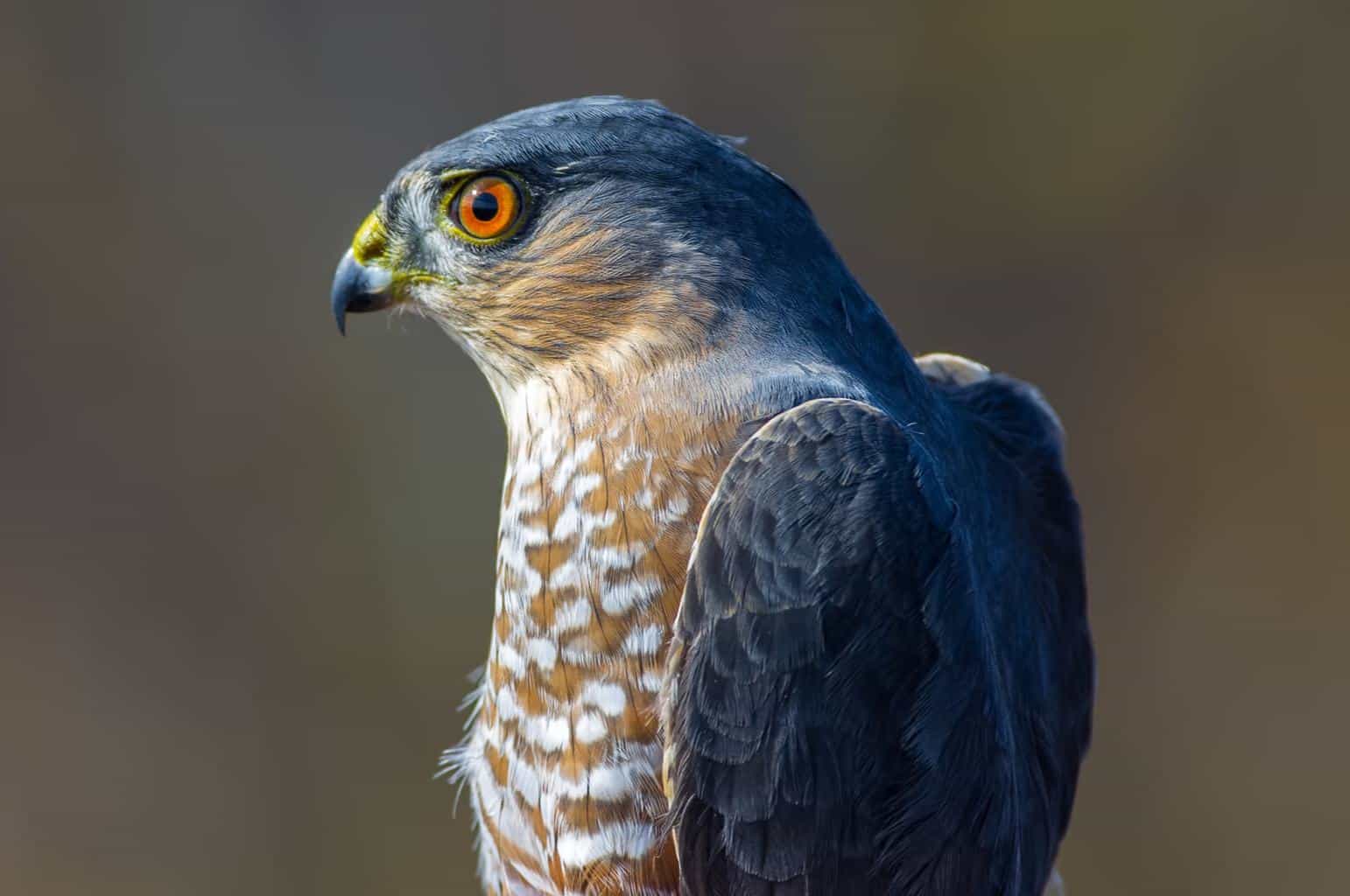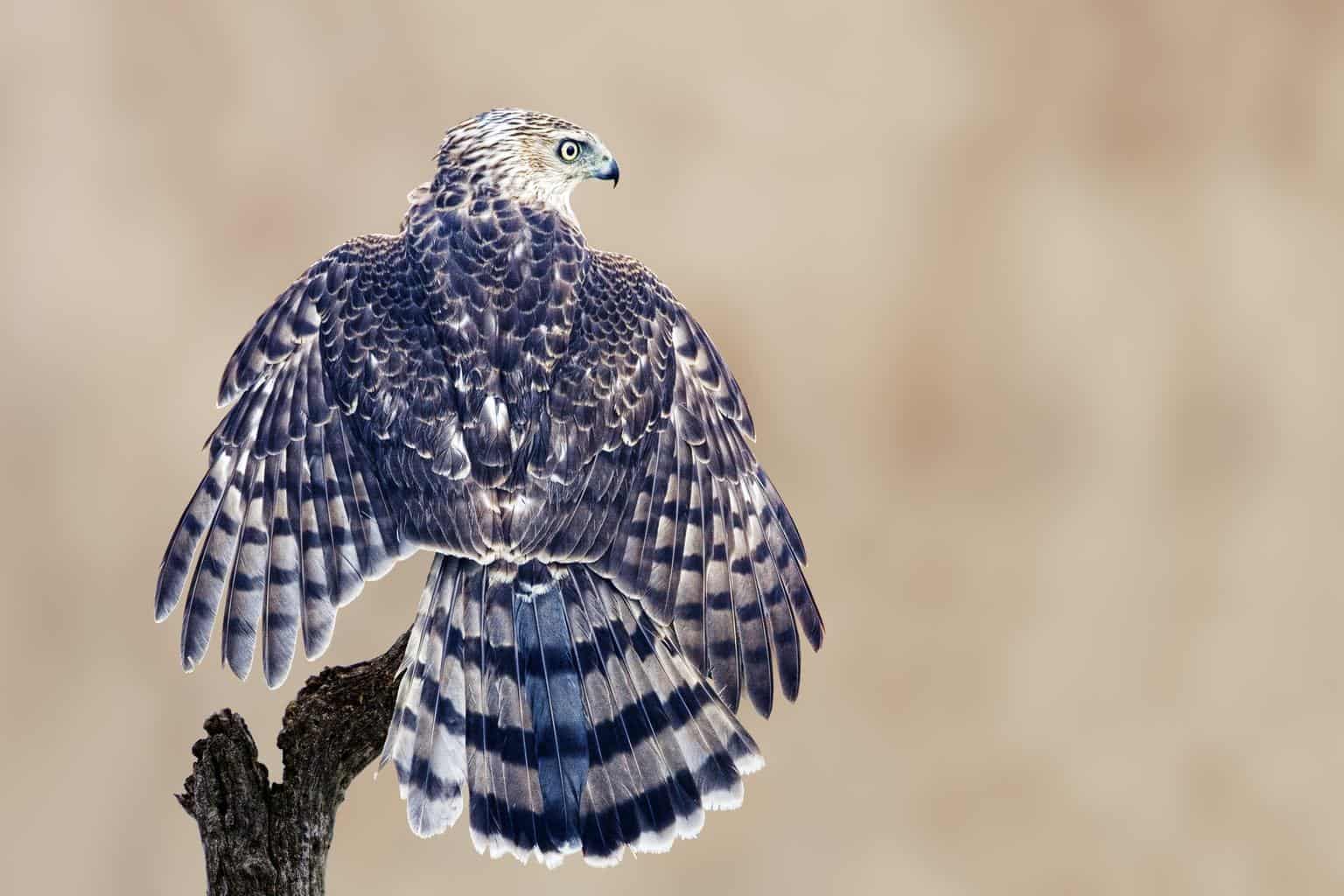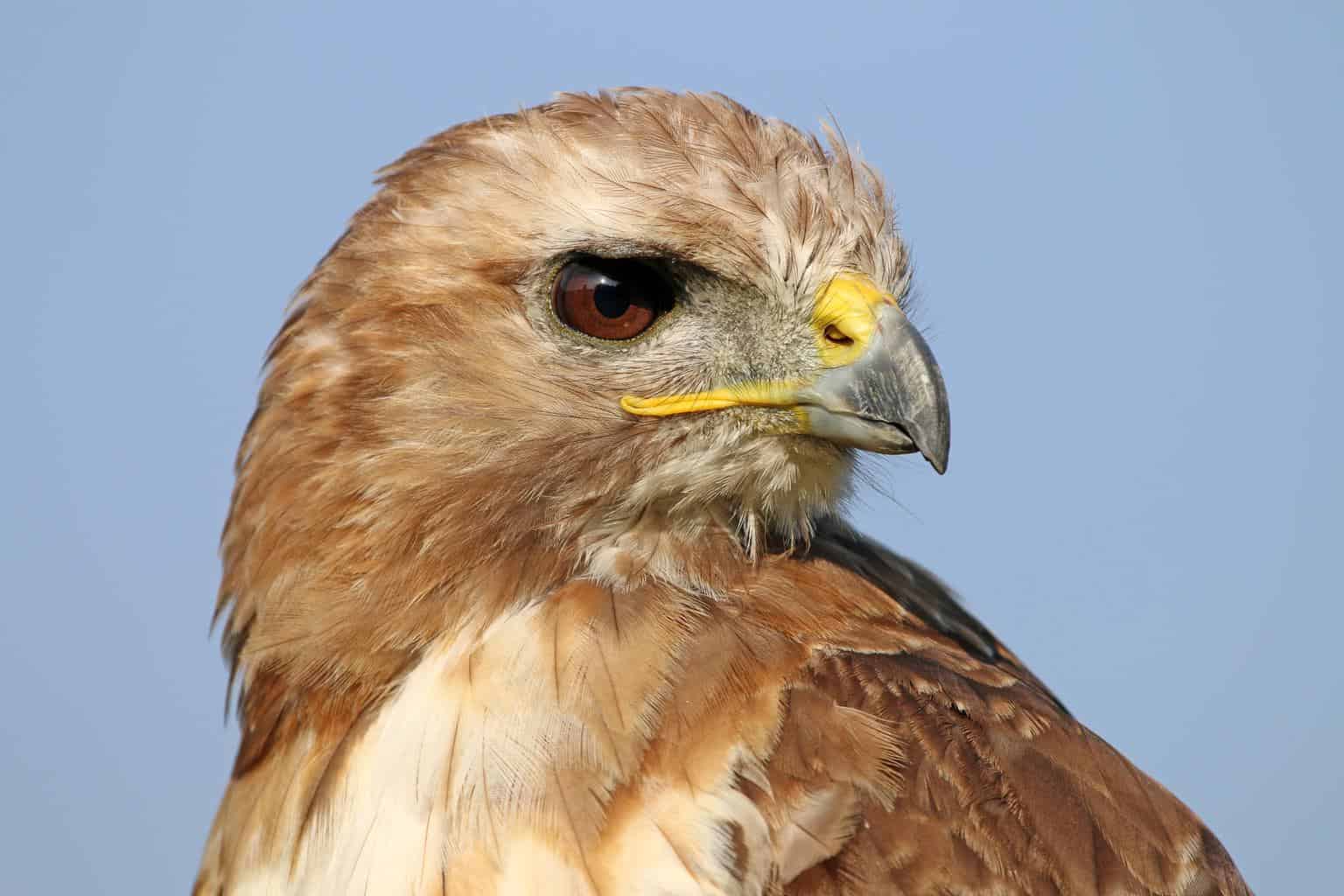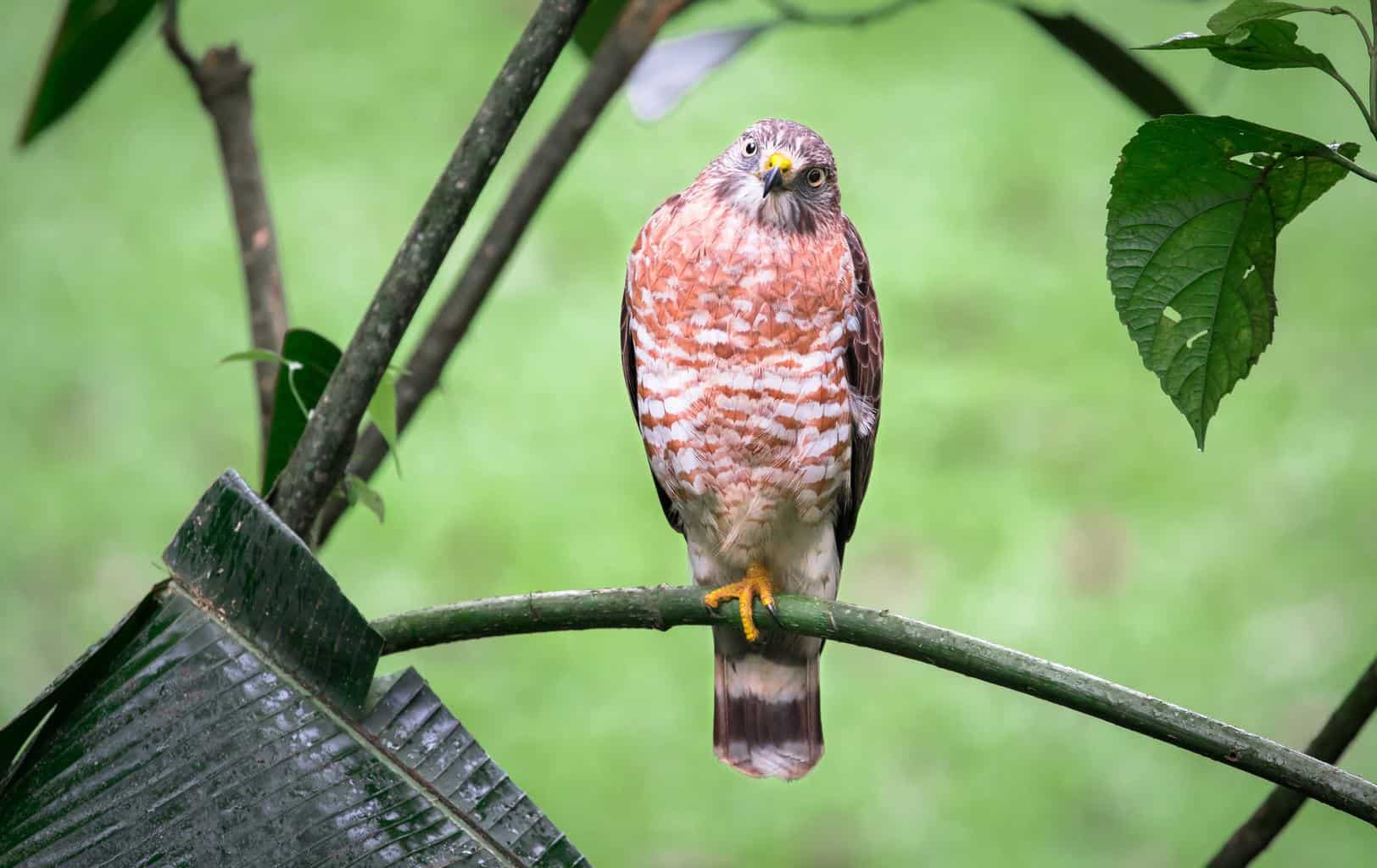Fun fact: Michigan has more than 3,000 miles of freshwater shoreline — that’s the longest in the entire world!
If that doesn’t impress you, maybe this will: there are nearly 36,000 miles of streams and over 11,000 inland lakes in the midwestern state alone. Plus, Michigan is also the only state that touches four of the five Great Lakes. No wonder it’s been nicknamed the Great Lakes State!
With all that freshwater comes lots of natural topography and wildlife, like the approximately 360 species of beautiful birds that call Michigan home — including the state bird, the American robin.
One of the most prominent of these bird species found in Michigan is the majestic hawk, of which there are nine different variations you might see on your next visit.
These nine hawk species are spread out over the state’s low hills, mountains, and prairies. They come in various sizes, shapes, and color patterns. They also have different feeding preferences, with their diets ranging from small mammals to large insects, plus everything in-between.
Keep reading to find out more about each type of hawk in Michigan!
Sharp-Shinned Hawk

- Scientific name: Accipiter striatus
- Length: 9 – 13 inches
- Weight: 3 – 8 ounces
- Wingspan: 17 – 22 inches
Sharp-shinned hawks are one of the most popular birds of prey in Michigan. They’re year-round residents who are more commonly found in the southern areas of the state. During the breeding season, however, these birds head to the northern parts of the state where they can typically be found in open habitats.
One of the most distinctive features of this species of hawk is its acrobatic gliding. You can also identify them by the orange bars on their chest and their white underwings.
The sharp-shinned hawk is the smallest-sized raptor in North America. In typical accipiter style, they have short, round wings and long tails.
They tend to prey on small mammals, insects, and reptiles, but they also like to spend time at bird feeders looking for small birds such as songbirds, thrushes, and American robins to claim as food.
Cooper’s Hawk

- Scientific name: Accipiter cooperii
- Length: 15 – 18 inches
- Weight: 8 – 24 ounces
- Wingspan: 24 – 35 inches
Cooper’s hawk is usually mistaken for the sharp-shinned hawk, but birds of Cooper’s species typically have larger and heavier bodies.
These surprisingly agile birds are year-round residents of Michigan. They’re seen more in the southern regions of the state, heading north to breed. The secretive birds prefer to live in forests and wooded areas because they like their privacy. Unlike other hawk species, male Cooper’s hawks are responsible for building the nest.
Cooper’s hawks hunt songbirds, blackbirds, and mourning doves. They’ve also been known to prey on small mammals and insects.
Northern Goshawk

- Scientific name: Accipiter gentilis
- Length: 21–25 inches
- Weight: 22–48 ounces
- Wingspan: 40.5–46 inches
Northern goshawks prefer to keep to themselves. They like to stay out of sight, typically in forests and wooded areas where they remain the entire year.
They set up their habitats in deciduous maple and birch trees. Yet, due to deforestation, they’ve been forced to adapt to living in boreal and coniferous forests.
If you do happen to spot birds of this species, you might mistake them for Cooper’s hawks because they have the same coloring. But the northern goshawk is heavier and has a longer wingspan.
Their underwings range from a light gray to a bluish-white coloring, and an easy way to identify a northern goshawk is by looking for their deep red eyes.
These fierce raptors are what experts call opportunistic hunters. They don’t like working too hard and prefer to take whatever’s readily available, including reptiles, birds, insects, and small mammals.
Red-Tailed Hawk

- Scientific name: Buteo jamaicensis
- Length: 18 – 26 inches
- Weight: 24 – 26 ounces
- Wingspan: 45 – 52 inches
Red-tailed hawks are another commonly seen species of birds in Michigan. They travel north of the state for breeding, much like the sharp-shinned hawk.
The red-tailed hawk is known for having a bigger breeding distribution. They’re highly adaptable and have been seen in urban cities and suburban backyards. These raptors have also been nicknamed “roadside hawks,” as they can be found along highways or perching on powerlines.
You can easily spot a red-tailed hawk by the way they fan out their cinnamon-red tails as they’re flying and by their deep brown backs and underwings.
In typical buteo fashion, red-tailed hawks hunt small mammals, such as rabbits, voles, and mice. They also feed on reptiles and amphibians.
Red-Shouldered Hawk

- Scientific name: Buteo lineatus
- Length: 17 – 24 inches
- Weight: 1 – 1.5 pounds
- Wingspan: 35 – 50 inches
As with many other types of raptors that can be found in Michigan, the red-shouldered hawk can be seen year-round. They’re more commonly found in the southern areas before heading north to breed.
In contrast to the red-tailed hawk, which typically hunts along roads and highways, the red-shouldered hawk prefers nesting and hunting in dense forests and wooded areas.
A unique feature of the red-shouldered hawk is its easily identifiable markings. You’ll know this bird by its red shoulders, heavily banded tail, and pale underwings.
Red-shouldered hawks like feeding on reptiles, amphibians, and small mammals. Their unusual hunting style consists of taking their prey by surprise as they drop down for the kill from straight above.
Broad-Winged Hawk

- Scientific name: Buteo platypterus
- Length: 13 – 17 inches
- Weight: 9 – 20 ounces
- Wingspan: 32 – 39 inches
Broad-winged hawks are most famous for their yearly migration route to South America. Each fall, these robust birds fly in large groups called kettles. They’re estimated to travel an average of 4,000 miles. Then, they do it all over again in the springtime!
When in Michigan, they’re usually found in areas around the Great Lakes, and they prefer to set up their nests in quiet, secluded woodlands.
As with most buteo hawks, the broad-winged hawks prefer the perch-and-pounce hunting style. This is exactly what it sounds like: they perch and wait for their prey to come to them. Their diet consists of small mammals and amphibians, but occasionally, these birds switch things up and feed on rodents or large insects.
Rough-Legged Hawk

- Scientific name: Buteo lagopus
- Length: 18.5–20.5 inches
- Weight: 25–49 ounces
- Wingspan: 52–54 inches
Rough-legged hawks are unique because of the feathers that cover their entire legs. This feature helps keep them warm in their cold environments. Another of these birds’ interesting quirks is that they’re actually quite silent; they generally don’t make loud sounds until they’re near their nests.
Like most buteos, rough-legged hawks hunt small rodents, like lemmings, voles, and mice. They’re known for their distinctive hunting style in which they hover in place as they search for their next meal. In fact, this species is one of the few breeds of raptors that are even capable of doing this.
Northern Harrier

- Scientific name: Circus hudsonius
- Length: 18 – 20 inches
- Weight: 11 – 26.5 ounces
- Wingspan: 40 – 46.5 inches
Though they belong to the hawk family, northern harriers look more like owls. They can be identified by their round, smallish faces and white patches on their tails.
These athletic raptors can be seen in southern regions of Michigan year-round where they’ll likely be flying over open areas, fields, and marshes; those areas are where the harriers do their best hunting. Then, as with most hawk species, they head north for their breeding season.
This hawk likes to feed on small mammals and rodents. When they’re hunting, northern harriers rely more on their hearing than their sight, which is yet another feature they share with owls.
Osprey

- Scientific name: Pandion haliaetus
- Length: 21 – 23 inches
- Weight: 49 – 70.5 ounces
- Wingspan: 59 – 71 inches
Ospreys aren’t technically hawks. Scientists put them in a separate family and genus: Pandionidae and Pandion, respectively. So, why are they on our list of hawks in Michigan?
Even though Ospreys belong to a different bird group, they resemble hawks in many ways. They have excellent eyesight and are covered in brown plumage that’s similar to many hawks. They also have some serious hunting skills. Because 90 percent of their diet is fish, these birds are known as flying anglers, and their expert hunting style makes them a force to be reckoned with.
They plunge feet-first into the water to ensure they’ve trapped their prey before effortlessly snatching up their victims and flying away.
Some of their unique physical characteristics include padded talons and a rotating outer toe. These features make them pros at catching fish and boost their hunting abilities.
Conclusion
The Great Lakes State is famous for many things — manufacturing, agriculture, and tourism, just to name a few. But it’s best known for its numerous inland lakes and streams.
This natural landscape makes it an ideal habitat for all types of wildlife, including hawks. So, the next time you’re touring the midwestern state, keep an eye out for any of the species of hawks above.
Another bird species commonly seen in Michigan are the woodpeckers. The state’s varied and diverse topography offers a safe haven for these captivating bird species. So, study field guides, keep your binoculars on stand-by and make sure you have your camera ready. You don’t want to miss a second of these amazing birds.

